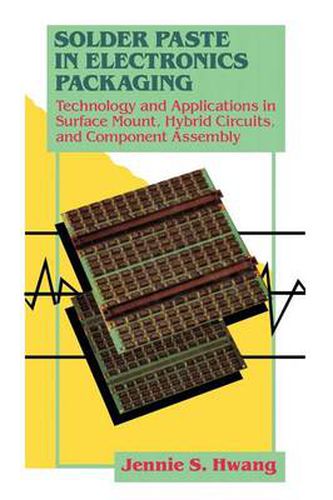Readings Newsletter
Become a Readings Member to make your shopping experience even easier.
Sign in or sign up for free!
You’re not far away from qualifying for FREE standard shipping within Australia
You’ve qualified for FREE standard shipping within Australia
The cart is loading…






This title is printed to order. This book may have been self-published. If so, we cannot guarantee the quality of the content. In the main most books will have gone through the editing process however some may not. We therefore suggest that you be aware of this before ordering this book. If in doubt check either the author or publisher’s details as we are unable to accept any returns unless they are faulty. Please contact us if you have any questions.
One of the strongest trends in the design and manufacture of modern electronics packages and assemblies is the utilization of surface mount technology as a replacement for through-hole tech nology. The mounting of electronic devices and components onto the surface of a printed wiring board or other substrate offers many advantages over inserting the leads of devices or components into holes. From the engineering viewpoint, much higher lead counts with shorter wire and interconnection lengths can be accommo dated. This is critical in high performance modern electronics packaging. From the manufacturing viewpoint, the application of automated assembly and robotics is much more adaptable to high lead count surface mounted devices and components. Indeed, the insertion of high lead count parts into fine holes on a substrate might often be nearly impossible. Yet, in spite of these surface mounting advantages, the utilization of surface mount technology is often a problem, primarily due to soldering problems. The most practical soldering methods use solder pastes, whose intricacies are frequently not understood by most of those involved in the engineering and manufacture of electronics assemblies. This publication is the first book devoted exclusively to explanations of the broad combination of the chemical, metallurgical, and rheological principles that are critical to the successful use of solder pastes. The critical relation ships between these characteristics are clearly explained and pre sented. In this excellent presentation, Dr. Hwang highlights three impor tant areas of solder paste technology.
$9.00 standard shipping within Australia
FREE standard shipping within Australia for orders over $100.00
Express & International shipping calculated at checkout
This title is printed to order. This book may have been self-published. If so, we cannot guarantee the quality of the content. In the main most books will have gone through the editing process however some may not. We therefore suggest that you be aware of this before ordering this book. If in doubt check either the author or publisher’s details as we are unable to accept any returns unless they are faulty. Please contact us if you have any questions.
One of the strongest trends in the design and manufacture of modern electronics packages and assemblies is the utilization of surface mount technology as a replacement for through-hole tech nology. The mounting of electronic devices and components onto the surface of a printed wiring board or other substrate offers many advantages over inserting the leads of devices or components into holes. From the engineering viewpoint, much higher lead counts with shorter wire and interconnection lengths can be accommo dated. This is critical in high performance modern electronics packaging. From the manufacturing viewpoint, the application of automated assembly and robotics is much more adaptable to high lead count surface mounted devices and components. Indeed, the insertion of high lead count parts into fine holes on a substrate might often be nearly impossible. Yet, in spite of these surface mounting advantages, the utilization of surface mount technology is often a problem, primarily due to soldering problems. The most practical soldering methods use solder pastes, whose intricacies are frequently not understood by most of those involved in the engineering and manufacture of electronics assemblies. This publication is the first book devoted exclusively to explanations of the broad combination of the chemical, metallurgical, and rheological principles that are critical to the successful use of solder pastes. The critical relation ships between these characteristics are clearly explained and pre sented. In this excellent presentation, Dr. Hwang highlights three impor tant areas of solder paste technology.